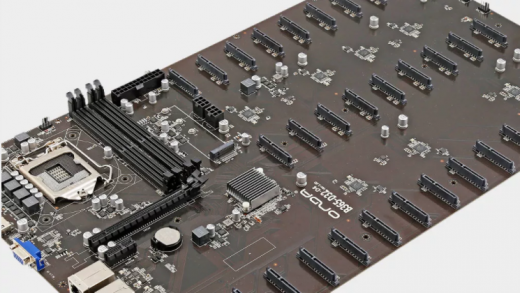The Ethereum 2.0 network had its first major incident on Saturday; Vitalik projects many more upgrades in Ethereum’s post-merge futureThe 101 Before You Invest in Bitcoin or EthereumFor crypto-curious investors looking to buy bitcoin or ether for the first time, there are a few things to consider before buying. “The Hash” panel gives a shoutout to CoinDesk’s Christine Kim’s important report and also share their own tips about risks and red flags when first getting into crypto.Volume 90%
Pulse check: When a client goes down

Read more: Ethereum 2.0 Explained in 4 Easy Metrics
The Ethereum 2.0 network had its first major incident on Saturday, April 24. A bug was discovered in the software client, Prysm, that prevented roughly 70% of validators on the network from producing blocks.
As background, there are four main Eth 2.0 software clients: Prysm, Teku, Lighthouse and Nimbus. In order to become a validator and earn rewards on the network, a user must download and run one of these software clients on his or her computer device.
On Saturday, the Eth 2.0 software client Prysm failed to properly ingest data from the Ethereum blockchain and, as a result, caused all validators running the Prysm client to miss out on block rewards.
Prysmatic Labs, the developer team behind Prysm, tweeted that the incident caused about 15 ETH (+1.3%) to be lost in total. On average, each individual validator running the Prysm client lost about 122,950 gwei, which is worth roughly $0.30 in today’s prices.

No validators were slashed in this process, meaning no users were forcefully removed from the network for malicious behavior. The damage was limited to missed validator rewards.
The incident lasted roughly two hours, where more than 403 blocks were missed. Since then the Prysmatic Labs team has issued a new version of the software with this bug fixed. In a Discord message, co-lead developer at Prysmatic Labs Raul Jordan stressed that all users running Prysm should update their software “immediately.”
“We would neither make an announcement nor a hotfix if we did not have the highest level of confidence in a resolution,” Jordan said.
Any validator who has not yet upgraded to the latest version of Prysm is at risk of missing out on network rewards. While the impact of this bug was most widely seen on April 24, evidence of it appeared on a smaller scale as early as Jan. 20 and as recently as April 25.
For all Eth 2.0 validators who are not running Prysm client software, there is no action needed. CoinDesk’s validator, nicknamed “Zelda,” is run on Lighthouse client software. As a result, we saw little to no change in our daily validator operations and rewards.

One of the biggest lessons to come out of Saturday’s incident, according to Teku developer Ben Edgington, is for “everybody to take client diversity seriously.” It’s difficult to predict when and how another bug in Eth 2.0 client software could be discovered, but what can be controlled is the extent of the damage.
By reducing the percentage of validators running the Prysm client down from 70% and boosting the use of other Eth 2.0 clients, validators and developers can be assured these types of bugs only impact a minority of users on the network.
“If you are running the majority client (which happens to be Prysm right now), then this is your call to action!” Edgington said.
New frontiers: Eth 2.0 after the Merge
Friday, April 23, the founder of Ethereum, Vitalik Buterin, gave a presentation at the Scaling Ethereum Summit on the development roadmap of Ethereum after its merge to proof-of-stake (PoS).

In his presentation, Buterin outlined an ambitious three- to five-year plan for subsequent upgrades and optimizations to Ethereum, even after the network has fully transitioned to an environmentally friendly and energy-efficient PoS protocol.
Here are some of the highlights:
Post-merge cleanup
Developers are currently estimating the merge will be activated through a backwards-incompatible, system-wide upgrade, also called a “hard fork,” by the end of this year or early next year.
Buterin described the need for a “post-merge cleanup [hard] fork” to happen shortly after the code release.
“It’s not very feature full, not very sexy, but cleanup has to be done. It is the technical debt that has to be paid once this accelerated merge is finished,” said Buterin.
Due to the expedited timeline for activating PoS on Ethereum, there will be redundancies and network inefficiencies that developers are overlooking for the sake of pushing out the upgrade faster.
Once the merge is complete and the network has stabilized, the post-merge, cleanup hard fork will address unnecessary legacy features of a hybrid proof-of-work (PoW) and PoS model. It will also enable new, long-awaited functionalities for validators on Eth 2.0, such as the ability for withdrawals and transfers of their ETH.
Sharding and rollups
Then comes another long-awaited feature on Ethereum: sharding.
Sharding expands Ethereum’s capacity to process transactions by splitting its database into 64 new mini-blockchains. These mini-blockchains or “shards” are able to process transactions and data in parallel. Along with sharding, rollups are a way to condense multiple transactions and reduce their size on any given shard.
With 64 shards simultaneously processing Ethereum transactions and each shard leveraging rollup technology to further optimize the speed at which these transactions are written onto blocks, the issue of high fees and network congestion is finally expected to be resolved for the long term.
Because of the potential dangers and risks associated with Ethereum’s “most promising strategy” for long-term scalability, Buterin highlighted the need to have it as a separate upgrade from all the rest.
“We don’t want to do all the potentially dangerous things at the exact same time. You want to do the first one [Ethereum’s merge to PoS] and then the other so that developers can pay attention and focus,” Buterin said.
Security improvements
With PoS and sharding both implemented, the next step is to make further tweaks to enhance the security of the Ethereum protocol. This includes adding anonymity features to mask validator identities behind block proposals. It also includes leveraging new technologies such as the Verifiable Delay Function (VDF) to further secure the randomness by which validators are assigned their responsibilities and thereby make it harder for malicious actors to disrupt the network.
Statelessness and state expiry
After boosting the robustness of Ethereum’s PoS protocol and shards, Buterin’s suspects developers will begin tackling “medium-term” agenda items, the most important of which, in my view, is the issue of Ethereum’s state.
Ethereum’s state keeps records of all Ethereum accounts, their data and their transaction history. As new user accounts and smart contracts are deployed on Ethereum, the size of Ethereum’s state grows larger and larger. By Buterin’s estimates, state size grows by roughly 30 GB each year. With the latest gas limit increase it’s more likely to grow even faster, up to about 35 GB each year.
Ideally, anyone should be able to spin up their own computer, also called a node, and verify the transaction history of Ethereum. The more independent nodes there are in operation, the more decentralized and secure a blockchain network is. Ethereum’s growing state makes it more time-consuming and resource-intensive for the average user to spin up their own node.
In addition, a large database that takes longer and longer to verify also becomes more vulnerable to distributed denial of service (DDoS) attacks, which are aimed at taking advantage of a network’s limited resource capacity and overwhelming it with more data than it can handle.
For all these reasons and more, developers are working on solutions to deal with the issue of Ethereum’s state size. One solution called “statelessness” suggests creating two distinct classes of Ethereum nodes. Some would be free of any responsibilities to store state data, while others would be responsible for storing all of it. Another solution, called “state expiry,” suggests reducing state size by archiving parts of Ethereum’s state that are more than a year old.
“This sounds crazy but it’s actually easier to do both at the same time than it is to do either just statelessness or just state expiry, which is interesting. So [this is] a big project. It does have quite a bit of complexity but it has a lot of value [and] potential to do some important good for the ecosystem,” Buterin said.
More big projects
Casper CBC. SNARKs. Quantum resistance. The list goes on.
I haven’t begun to scratch the surface of all that Buterin detailed for his vision of Ethereum’s future roadmap post-merge. With all its breadth, it sounds as if it would need a lot longer than a few years to complete.
Even with a successful activation of PoS, Ethereum is a far way off from going into “maintenance mode” and reaching the same level of protocol stability the Bitcoin network presently maintains.
The main takeaway from this new and updated roadmap for Ethereum’s development is that a transition to PoS is just the beginning. It’s the starting point, rather than the finish line, with still more significant protocol-level changes yet to come on the network.
Validated takes
- How to visualize a merged, data-sharded Ethereum (Blog post, Barnabé Monnot)
- Binance to launch an NFT marketplace this June (Article, CoinDesk)
- Bitmain to release the Antminer E9 ASIC for Ethereum mining (Article, CoinDesk)
- Polygon price climbs to a record high, benefiting from Ethereum network congestion (Article, CoinDesk)
- How a hacker tried to fake the world’s most expensive NFT (Article, CoinDesk)
- An update from all the teams supported by the Ethereum Foundation (Blog post, Ethereum Foundation)
- On staking pools and staking derivatives (Blog post, Paradigm Research)
Factoid of the week

Open comms
Feel free to reply any time and email [email protected] with your thoughts, comments or queries about today’s newsletter. Between reads, chat with me on Twitter.
Valid Points incorporates information and data directly from CoinDesk’s own Eth 2.0 validator node in weekly analysis. All profits made from this staking venture will be donated to a charity of our choosing once transfers are enabled on the network. For a full overview of the project, check out our announcement post.
You can verify the activity of the CoinDesk Eth 2.0 validator in real time through our public validator key, which is:
Search for it on any Eth 2.0 block explorer site!
Join Christine Kim and Consensys’ Ben Edgington in a CoinDesk podcast series called “Mapping Out Eth 2.0.” New episodes air every Thursday. Listen and subscribe through the CoinDesk podcast feed on Apple Podcasts, Spotify, Pocketcasts, Google Podcasts, Castbox, Stitcher, RadioPublica, IHeartRadio or RSS.












